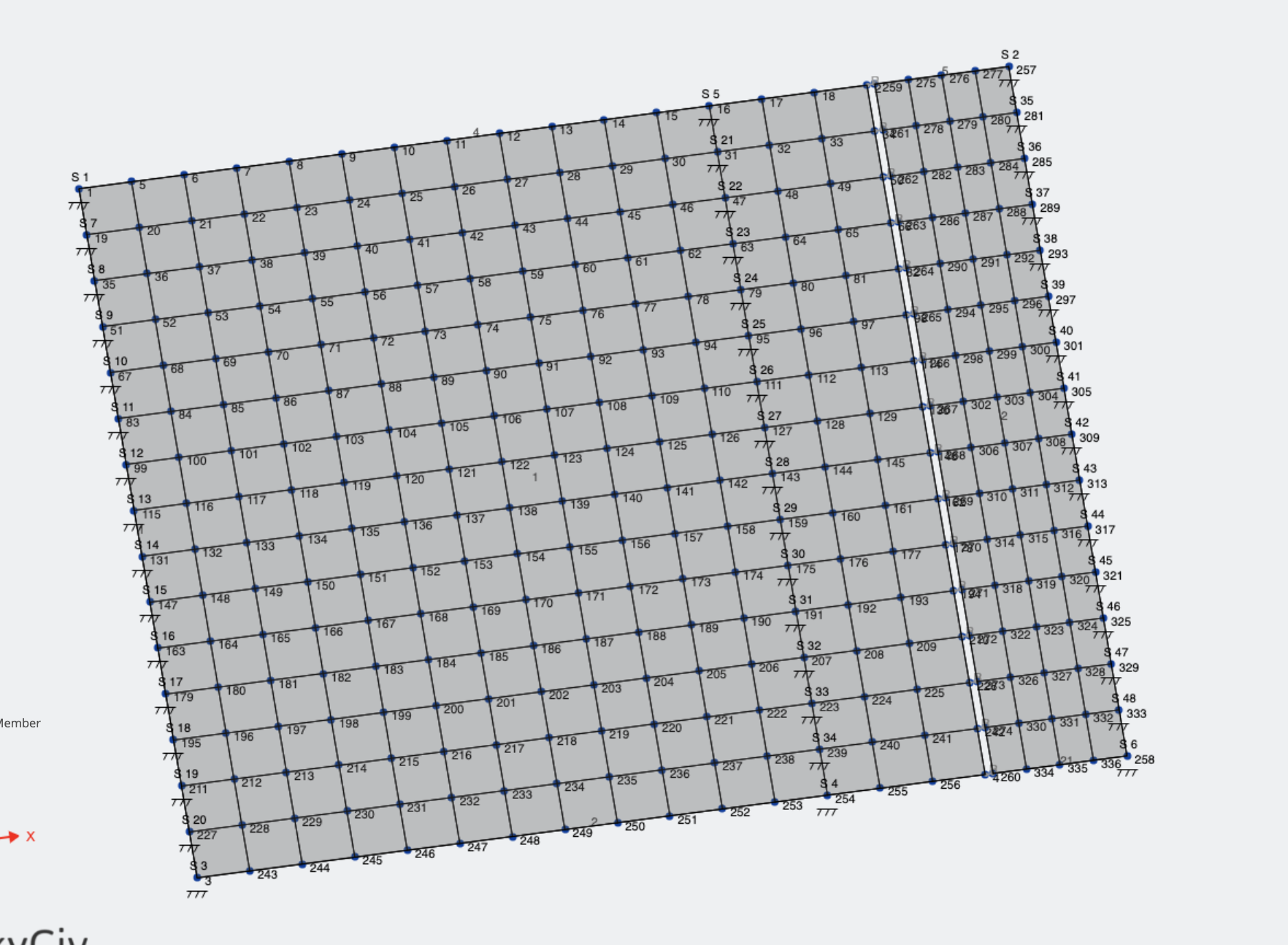Eine Einführung und Beispielanwendungsfälle für starre Mitglieder
Starre Mitglieder sind eine leistungsstarke und effektive Mitgliedsklasse, Damit kann ein vollständig starres Element simuliert werden. Sie werden häufig zur Kraftübertragung von einem Ort zum anderen eingesetzt, über einige willkürliche, imaginär, unendlich starres Glied. Weitere Informationen zu ihrer Funktionsweise finden Sie im folgenden Video, wie man sie in Software modelliert, und einige Anwendungsfälle:
So verwenden Sie starre Elemente
Ein Element als starr festlegen, Geben Sie einfach das Mitglied an “Art” wie “Starre Verbindung”. Hinweis: Möglicherweise müssen Sie das umschalten fortgeschrittener Modus weiter, um das zu sehen Art Attribut:
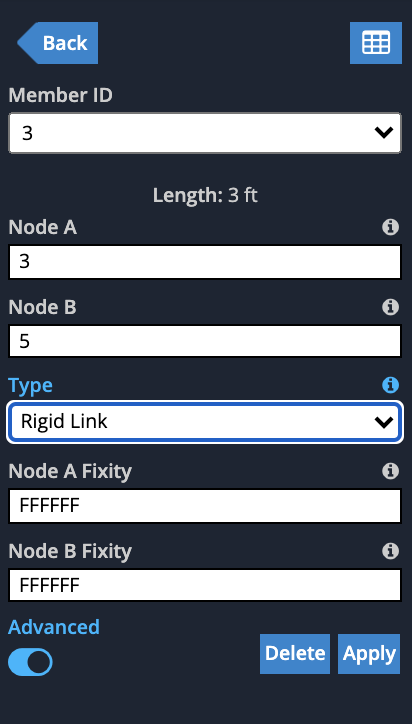
Sie werden feststellen, dass die Optionen ausgeblendet werden (da sie für starre Verbindungen nicht erforderlich sind) aber Sie können die Endfixierungen immer noch kontrollieren, die im Wesentlichen steuert, welche Lasten übertragen werden. Sobald Sie klicken Anwenden, Sie werden sehen, dass die starre Verbindung in hellgrauer Farbe mit a gezeichnet ist “R.” Symbol daneben:
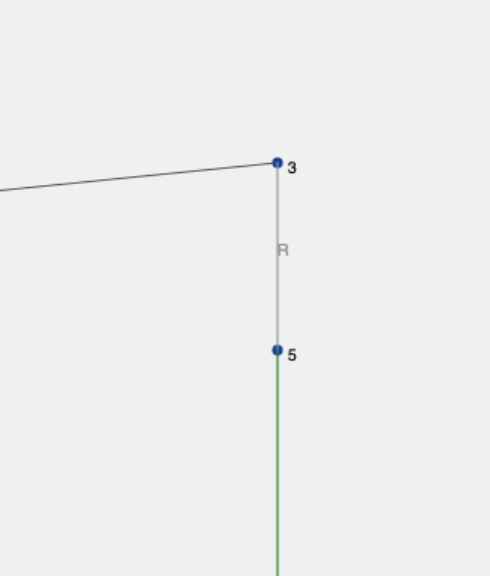
Anwendungsfälle
Gestapelte Balken
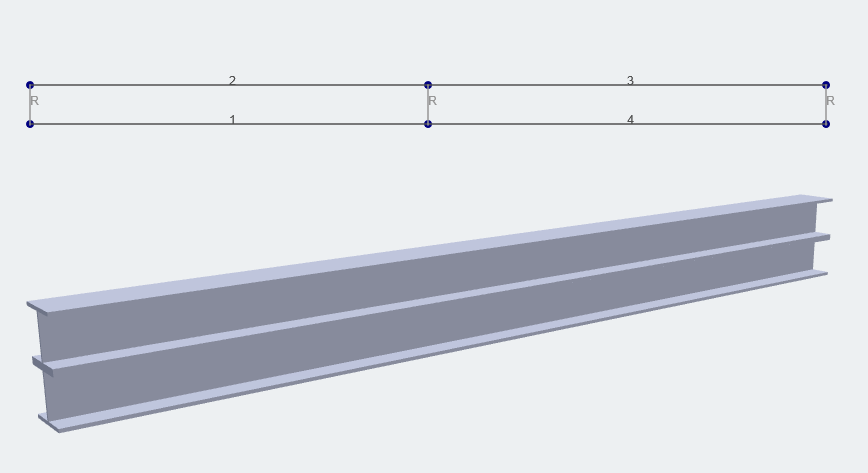
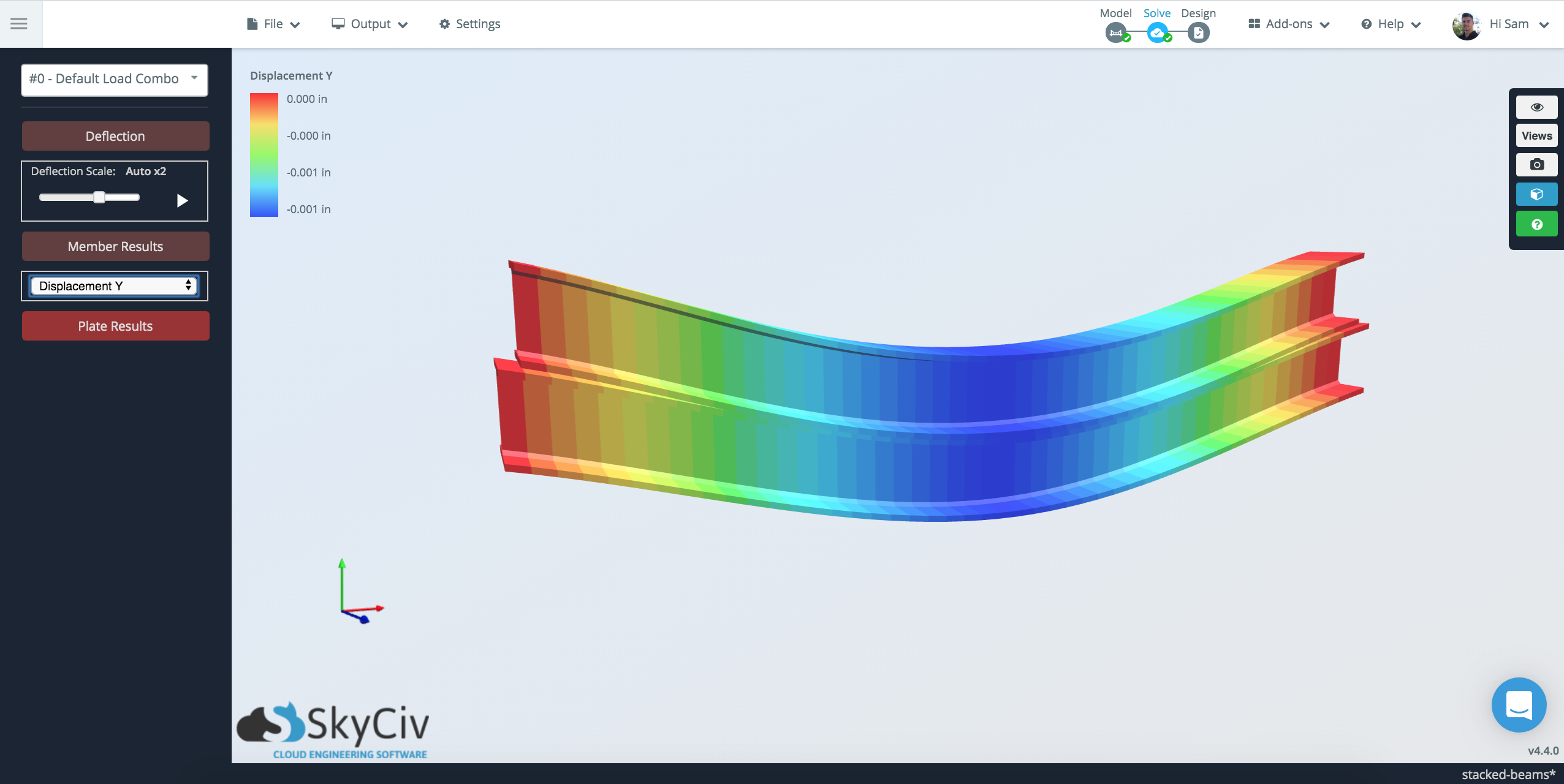
Linienscharniere zwischen Platten
Starre Verbindungen können nützlich sein, um starre Verbindungen zwischen Strukturen oder Elementen zu definieren. Sie werden oft als imaginäre steife Verbindungen betrachtet, die Mitglieder verbinden, damit sie es können zusammen übersetzen und/oder rotieren. Eine starre Verbindung kann auch zur manuellen Steuerung von Elementversätzen oder Verbindungen verwendet werden. Darüber hinaus können Sie die Fixität/Freigaben in der starren Verbindung ändern, um zu steuern, welche Kräfte und Auswirkungen sie auf die Verbindung hat. Ein gutes Beispiel hierfür ist die Simulation von Linienscharnieren, um Platten durch Scharniere zu verbinden:
Beginnen Sie mit dem Hinzufügen von zwei Tellern (die Sie mit einem Scharnier verbinden möchten) und verbinden Sie sie mit starren Elementen mit Endbefestigungen FFFFRR. Diese starren Verbindungen verbinden die Lücke in den Platten, die wir unten sehen:
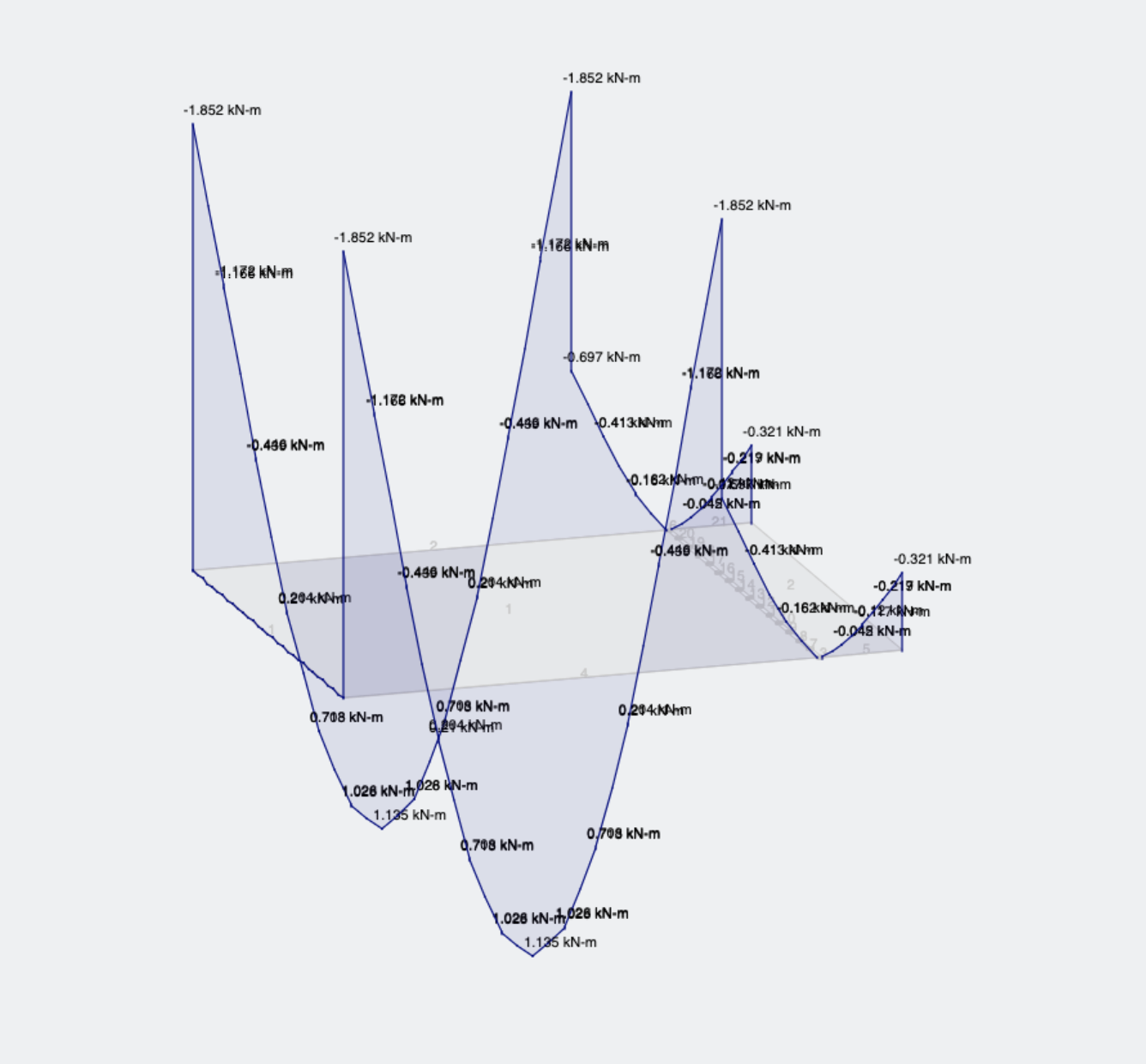
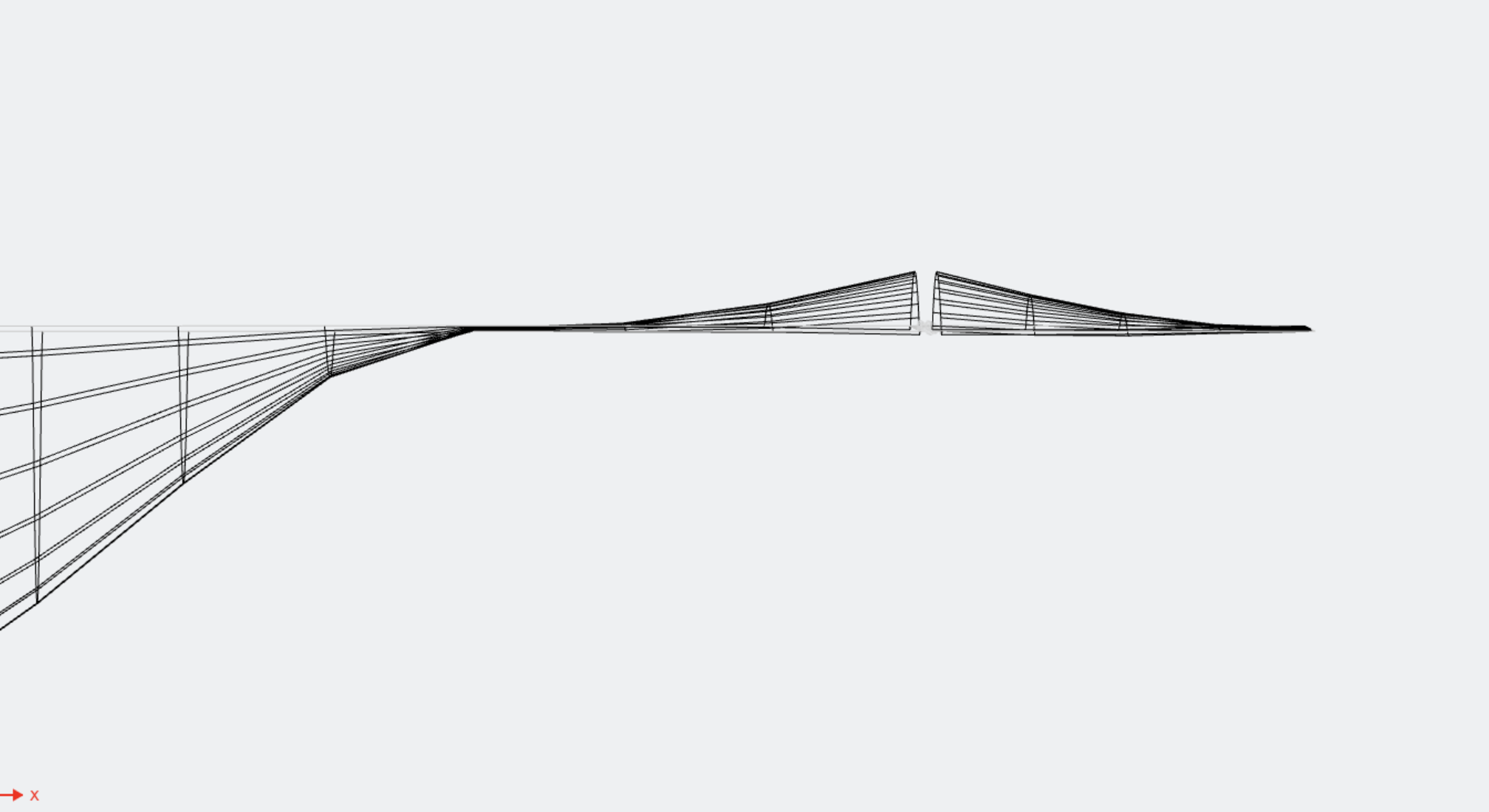
Beheben häufiger Probleme
Master/Slave-Konnektivität
Einer der häufigsten Fehler des Solvers bei der Verwendung starrer Verbindungen ist:
“Fehlercode 182: Knoten #5 ist der Masterknoten (Knoten A) of Member #17 rigid link and cannot be used as the slave node (Knoten B) eines anderen starren Verbindungselements. This might be due to an offset that is connected to a rigid link. Please remove the offset or rigid link to avoid this issue.”
If you’re receiving an error like this this guide will help you to fix these sorts of issues. The issue occurs because a Master node can have many slave nodes. Jedoch, a slave node can only have one master node. Einfach ausgedrückt, keep a single Master with many slaves coming from it. Consider the below example, which was causing the above error:
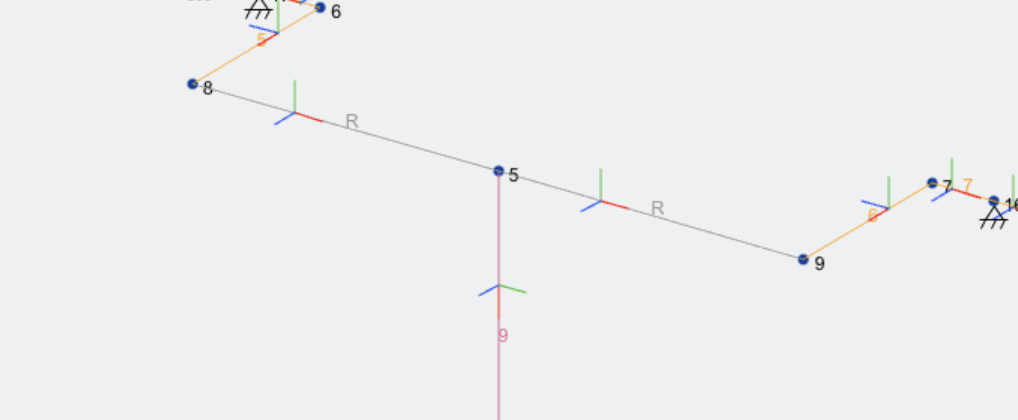
The best thing you can do is turn on the local axis and it will show the direction of master to slave by the red line (the member’s local x-axis). You can see that the red line is flowing left to right which would indicate that the Slave of one member is also a Master of another.
Um das zu beheben, flip the node IDs of the first member so you get this behaviour, with the rigid members sort of flowing out from a single node:
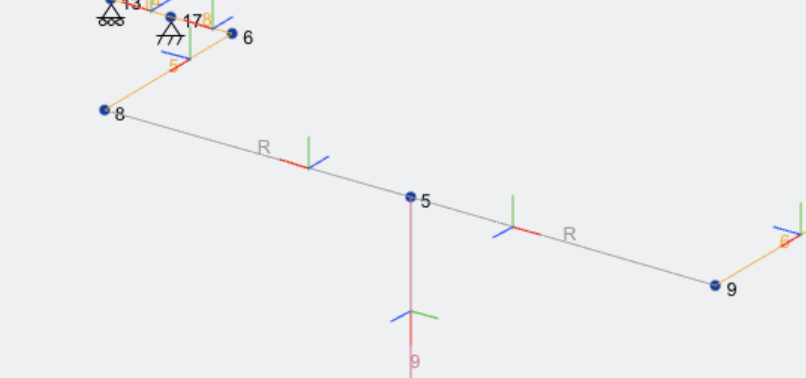
Using Rigid Links near Offsets
This is quite similar to the above issue, Sie können jedoch automatisch auftreten, wenn Offsets verwendet werden. Mit Offsets, Der Masterknoten ist immer der Knoten, von dem aus das Mitglied versetzt ist. Das Prinzip ist das gleiche wie oben, um sicherzustellen, dass dies funktioniert, Das starre Element beginnt immer am versetzten Knoten. Noch einmal, the member local axis should ausströmen:
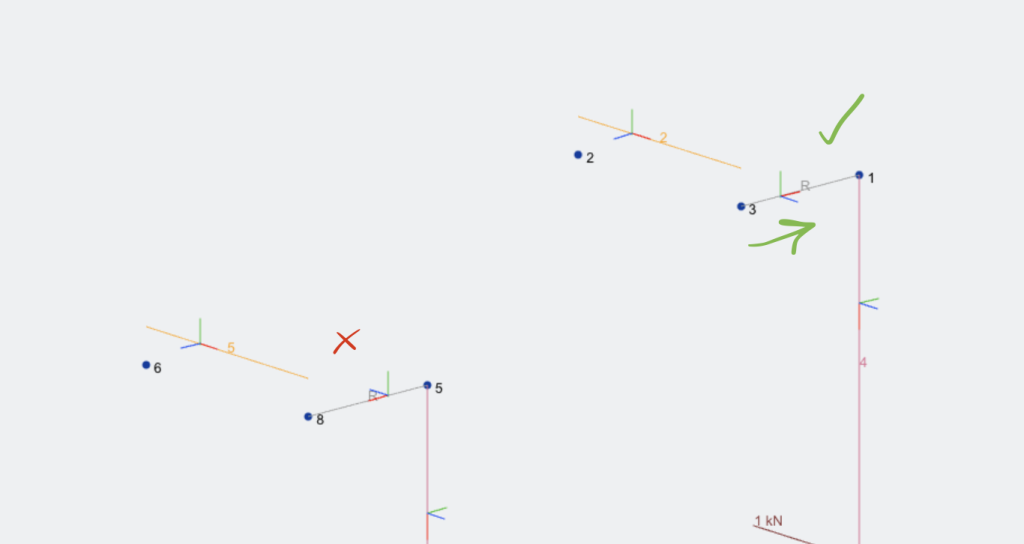
Angrenzende Membranen
Having two connected diaphragms can also cause Master-Slave issues. It’s important to note that the Master node in a diaphragms is always the first node. This can create issues where two connected diaphragms have a common master/slave node. So if you want two adjacent rigid diaphragms, you would need to set it up like so:
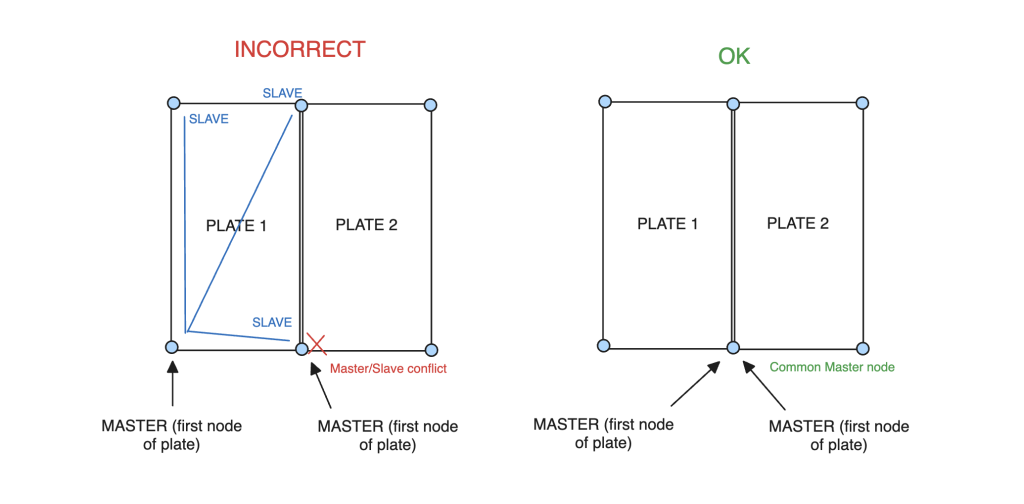
The problem can be worsened if there are more than two diaphragms, since there is no way to share a common master node. In diesem Fall, it is better to replace the whole plate with a single rigid diaphragm, remember you can have more than 4 nodes for a plate, so this should be a pretty acceptable workaround in most cases:
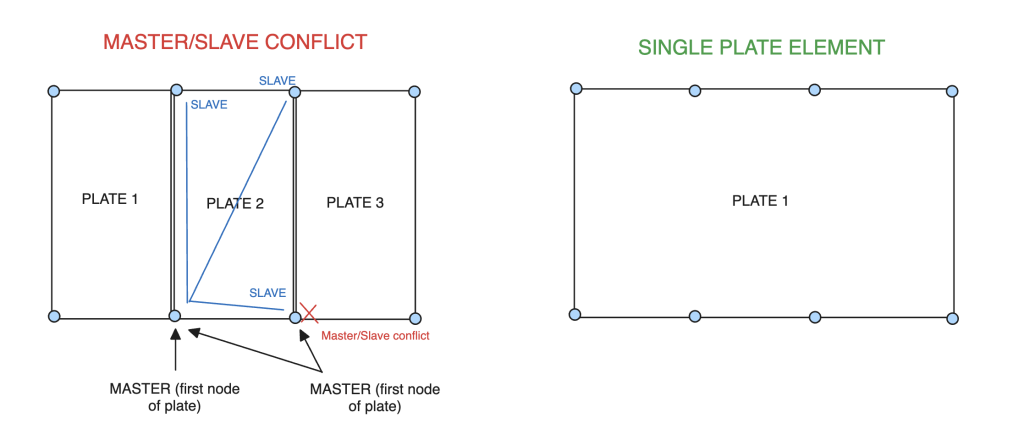
Slaves Cannot be Supports
This is a general structural analysis limitation.

